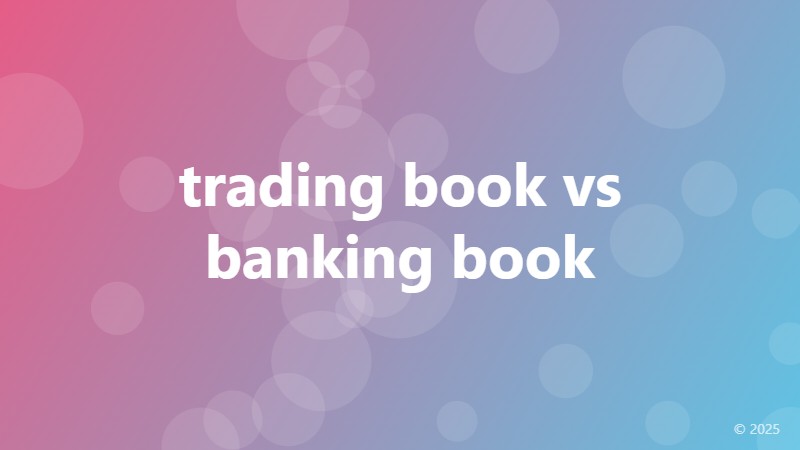trading book vs banking book

Understanding the Difference between Trading Book and Banking Book
In the world of finance, banks and financial institutions are required to maintain two separate books: the trading book and the banking book. These two books serve distinct purposes and are subject to different regulations and accounting treatments. In this article, we will delve into the differences between the trading book and the banking book, and explore their significance in the financial industry.
What is a Trading Book?
A trading book refers to a portfolio of financial instruments held by a bank or financial institution with the intention of selling or trading them in the near future. These instruments can include stocks, bonds, options, futures, and other derivatives. The primary objective of a trading book is to generate profits through short-term trading activities, such as buying and selling securities, hedging, and arbitrage.
The trading book is subject to mark-to-market accounting, which means that the value of the securities is adjusted daily to reflect current market prices. This approach allows banks to recognize profits and losses quickly, enabling them to respond rapidly to changing market conditions.
What is a Banking Book?
A banking book, on the other hand, refers to a portfolio of financial assets held by a bank or financial institution with the intention of holding them until maturity. These assets can include loans, mortgages, and other debt securities. The primary objective of a banking book is to generate interest income through the collection of principal and interest payments over an extended period.
The banking book is subject to accrual accounting, which means that the interest income is recognized over the life of the asset. This approach allows banks to recognize income steadily over time, providing a stable source of revenue.
Key Differences between Trading Book and Banking Book
The main differences between the trading book and the banking book lie in their objectives, risk profiles, and accounting treatments. The trading book is designed for short-term trading activities, while the banking book is focused on long-term investments. The trading book is subject to mark-to-market accounting, whereas the banking book follows accrual accounting.
Another significant difference is the level of risk associated with each book. The trading book is exposed to higher levels of market risk, liquidity risk, and credit risk due to the short-term nature of the investments. In contrast, the banking book is subject to lower levels of risk, as the assets are held until maturity, and the interest income is recognized steadily over time.
Conclusion
In conclusion, the trading book and the banking book are two distinct concepts in the financial industry, each with its own objectives, risk profiles, and accounting treatments. Understanding the differences between these two books is essential for banks and financial institutions to manage their assets effectively, mitigate risks, and optimize their performance.
By recognizing the unique characteristics of each book, financial institutions can develop strategies to maximize profits, minimize losses, and ensure compliance with regulatory requirements. Whether you are a finance professional, investor, or simply interested in the world of finance, grasping the distinction between the trading book and the banking book is crucial for making informed decisions and achieving success in the financial markets.